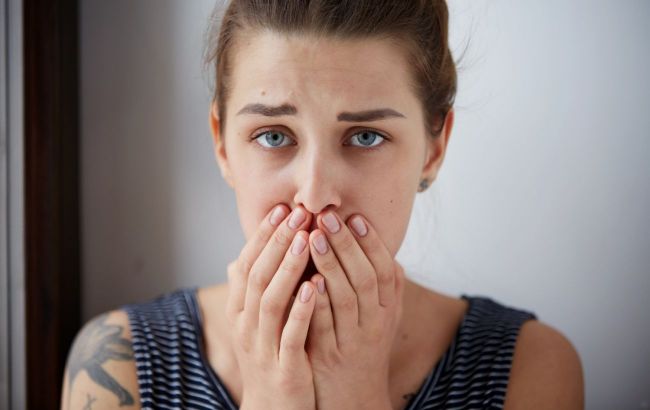Panic attacks - Symptoms, ways to stop them
 Symptoms and treatment methods of a panic attack (illustrative photo: Freepik)
Symptoms and treatment methods of a panic attack (illustrative photo: Freepik)
Panic attacks are sudden, intense bursts of fear, panic, or anxiety. They come with both physical and emotional symptoms. Panic attacks can be triggered by social events, public speaking, or stressful situations that remind you of past or current stress in your life.
Clinical psychologist Jacqueline Johnson explained the symptoms of a panic attack and how to stop it in the medical journal HealthLine.
Symptoms of panic attacks:
- rapid heartbeat
- sweating
- trembling
- shortness of breath or feeling like you're choking
- chest pain or discomfort
- chills or feeling hot
- fear of losing control or "going crazy"
- fear of dying
How to stop a panic attack
Seek professional advice
Cognitive-behavioral therapy (CBT) and other types of counseling can often help people who experience panic attacks and disorders. Your therapist will assist you in overcoming what can trigger panic attacks.
In addition to behavior change, there is some evidence that CBT can influence the brain structures responsible for panic symptoms.
Take a deep breath
Focus on taking a deep breath in through your nose, feeling the air slowly fill your chest and abdomen. Then, exhale slowly through your mouth, feeling the air leave your body. Inhale through your nose, counting to four, hold your breath for a second, and then exhale through your nose, repeating the count.
Recognize that you are experiencing a panic attack
By recognizing that you are having a panic attack, not a heart attack, you can remind yourself that it's a temporary phenomenon.
While it's not always possible to avoid triggers for a panic attack, knowing what causes it can help you understand that it's a panic attack and not something else.
Use muscle relaxation techniques
Muscle tension is a symptom of anxiety and muscle relaxation techniques can help reduce tension and promote relaxation during a panic attack.
Similar to deep breathing, muscle relaxation techniques can help stop a panic attack while maximizing control over your body's response.
Imagine your happy place
Guided imagery techniques can help reduce stress and anxiety. Research shows that spending time in nature as well as visualizing nature can be helpful in treating and coping with anxiety.
Engage in light exercises
The data suggests that regular physical exercises can not only maintain physical health but also improve mental well-being.
If you feel stressed or experience heavy breathing during exercise, take a break or opt for a more moderate form of physical activity, such as walking, swimming, or yoga.
Here are a few more tips to help prevent a panic attack:
-
practice daily breathing exercises
-
engage in regular physical activities
-
follow a low-sugar diet and eat regularly to avoid glucose spikes
-
avoid caffeine, smoking, and alcohol, as they can intensify anxiety
-
seek consultation and other professional assistance.
This material is for informational purposes only and should not be used for medical diagnosis or self-treatment. Our goal is to provide readers with accurate information about symptoms, causes, and methods of detecting diseases. RBС-Ukraine is not responsible for any diagnoses that readers may make based on materials from the resource. We do not recommend self-treatment and advise consulting a doctor in case of any health concerns.

